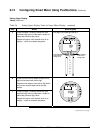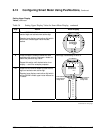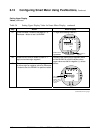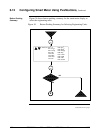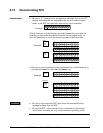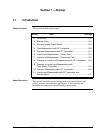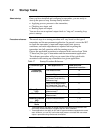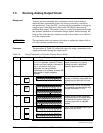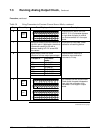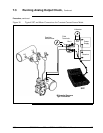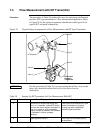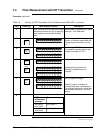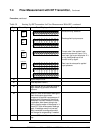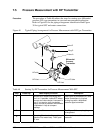
ST 3000 Release 300 and SFC Model STS103 User’s Manual 6/08
124
7.2 Startup Tasks
About startup
Once you have installed and configured a transmitter, you are ready to
start up the process loop. Startup usually includes
• Applying process pressure to the transmitter,
• Checking zero input, and
• Reading input and output.
You can also run an optional output check to “ring out” an analog loop
prior to startup.
Procedure reference
The actual steps in a startup procedure will vary based on the type of
transmitter and the measurement application. In general, we use the SFC
to check the transmitter’s input and output under static process
conditions, and make adjustments as required before putting the
transmitter into full operation with the running process.
Choose the applicable procedure to reference in this section from Table
37 based on your type of transmitter and the measurement application.
The reference procedure will give you some idea of the typical tasks
associated with starting up a transmitter in a given application.
Table 37 Startup Procedure Reference
IF transmitter type
is . . .
AND application is . . . THEN reference
procedure in section . . .
Differential
Pressure (DP)
Flow Measurement 7.4
Pressure Measurement 7.5
Liquid Level Measurement
for Vented Tank with Dry
Reference Leg
*
7.6
Liquid Level Measurement
for Pressurized Tank with
Liquid-Filled Reference Leg
*
7.7
Gauge Pressure
(GP)
Pressure or Liquid Level
Measurement
**
7.8
Flush Mount Pressure or Liquid Level
Measurement
7.9
Absolute Pressure
(AP)
Pressure Measurement** 7.10
DP with Remote
Seals
Liquid Level Measurement 7.11
* These applications also apply for flange-mounted liquid level type transmitters that
are usually mounted directly to a flange at the zero level of the tank.
** These applications also apply for GP and AP type transmitters equipped with remote
seals. However, you can only confirm that input pressure correlates with transmitter
output in processes using remote seal connections.



